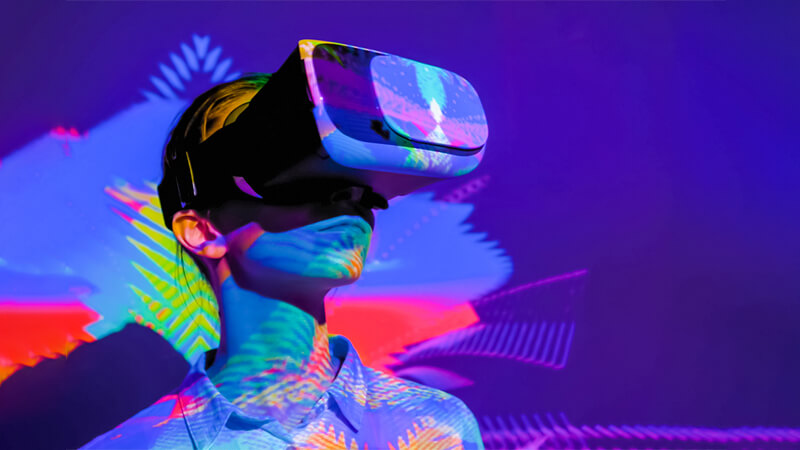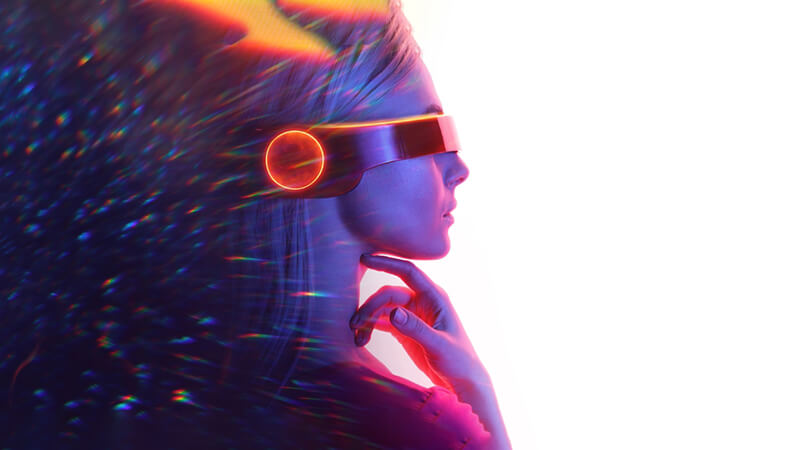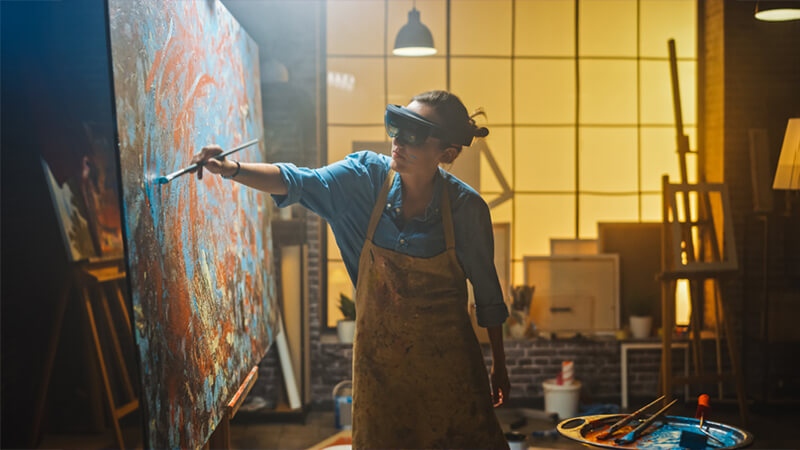Art, in its many forms, has always been a reflection of the human spirit – a way to express our innermost thoughts, emotions, and perspectives. Today, as we navigate the ever-evolving tech landscape, we’re witnessing a fascinating transformation in the art world, catalyzed by Augmented Reality (AR) and Virtual Reality (VR). This intersection of art and technology is not only changing how we create and consume art, but it’s also enhancing our understanding and appreciation of it, making art more immersive, accessible, and engaging.
AR and VR, by their very essence, break the boundaries of traditional two-dimensional artwork. Instead of just looking at a painting on a wall, imagine stepping into the painting and becoming a part of its world. VR offers us this possibility. It opens up an entirely new dimension for artists, who can now create in three-dimensional spaces and invite audiences to literally ‘step into’ their creations.
For instance, with VR, a historical painting can be transformed into a living, breathing 3D world that you can explore, allowing you to experience the setting, the context, and the atmosphere that inspired the artist. This immersive experience can significantly enhance our connection to the artwork, making it more personal and meaningful.
AR, on the other hand, can bring art to our everyday surroundings. Mobile apps, equipped with AR technology, can let you virtually place sculptures in your home or bring paintings to life right on your screen. It blurs the line between the physical and virtual world, thereby democratizing art and making it more accessible to everyone, regardless of their location or financial capacity.
But the role of AR/VR in art is not limited to experiencing art; it’s also proving to be a potent tool for art education. AR/VR can transport students to world-class museums or historical sites, provide interactive tours, and even offer virtual art classes, thereby providing rich, engaging learning experiences that were previously unimaginable.
However, as with any technological innovation, the incorporation of AR/VR in art also raises questions. Will the essence of traditional art forms be lost in this digital translation? Can a virtual experience ever match the joy of physically exploring a museum or an art gallery? And more importantly, how do we ensure that technology enhances human creativity rather than replacing it?
From my perspective, AR and VR are not replacing traditional art but rather enriching it. They provide new mediums for artists to express their creativity and allow us to experience art in unprecedented ways. They also open up art to wider audiences, which can inspire more people to appreciate and create art.
As we continue our journey into this exciting new era of art, it’s crucial to remember that technology is a tool, and like any tool, its impact depends on how we wield it. If used thoughtfully and ethically, AR/VR can be powerful catalysts in the evolution of art, fostering creativity, exploration, and a deeper appreciation for the power of human imagination.
In the coming posts, we’ll continue exploring how technology is reshaping our world, always from a human-centered perspective. We’re living in remarkable times, and I can’t wait to delve deeper into these exciting changes with you all. Stay tuned!



